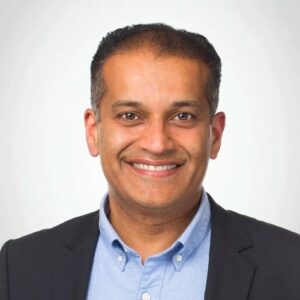According to some estimates, the creator economy is estimated to be worth over 104 billion USD. That’s hardly a surprise, given that 30% of 18-24-year-olds and 40% of 25-34-year-olds call themselves content creators.
The creator economy, an ecosystem that involves using a range of content-creation methods and monetization strategies, allows people with different talents to earn money with their skills via platforms like YouTube, Instagram, Medium, Twitch, Etsy, blogs, podcasts, e-commerce solutions, and much more.
If they’re successful, these content creators build communities and cultivate fan engagement to support their personal brands. And the forums where creators can market and sell their work or gain followers are growing in size, volume, and engagement, too.
New platforms are emerging every day. Now, would-be entrepreneurs can embrace their art and earn a living without being employed by media, entertainment, and other outlets — they can do it all on their own.
Why is the creator economy so important in 2025? How can creators tap into it to live out their passions?
What Is the Creator Economy?
Web 2.0 gave rise to an entirely new way to manage our work and lives. With platforms like Facebook, Instagram, and YouTube providing a forum for sharing creative content came a broader interest in decentralizing and democratizing digital media and related industries. Ordinary people could spread their messages and work, whether in the form of articles, photographs, videos, or other content.
Influencer marketing is one subset of the creator economy, but the sphere extends far beyond this niche sector. People are essentially creative entrepreneurs looking to build and grow communities. It’s spurring a whole new economy and monetization strategies. It’s also opening up the door for people to understand their own worth and share their skills without answering to a manager or employer.
How Does the Creator Economy Work?
Basically, the creator economy is about, well, creating. Teams or individuals build their product or service and share it on a content platform, such as one of the ones listed above. The goal, of course, is to earn money from distributing the product.
Some platforms are actually services that list and showcase physical products, like Etsy, a marketplace for art, crafts, and other goods. Others offer the digital product upfront, as is the case on YouTube and Instagram, where users can post images and videos. In some cases, the material is protected by a paywall, meaning consumers can’t access the content until they pay for it.
Many users also advertise via external platforms, including social media sites and Google Ads. While content platforms work in different ways, some of the most common payment models include:
- Click-through rates (CTR) or number of views
- Subscriptions
- Profit-sharing
- Sponsorship deals
- Social media advertising
- Search-engine advertising
- Direct sales
- Partnerships
- Paywalls
Platforms earn money off of content-sharing, too. They may take a cut of creators’ profits, or, they might charge listing fees. YouTube, for example, keeps a fraction of advertising revenue.
How Does Technology Support the Creator Economy?
The creator economy depends on technology — it wouldn’t exist without the digital tools behind it. While the content creators themselves are the ones making the material, they do depend on online platforms and digital media, whether they’re marketplaces like Etsy, streaming services like YouTube, or publishers like WordPress.
Low-code and no-code platforms are especially useful in the creator economy. Built by software developers, they make it possible for individuals with no background or experience in software to make their work and showcase it.
Social media, too, has been instrumental in facilitating the flow of the creator economy. Not only does it provide a means of sharing your work, but it also serves as a platform for creating in and of itself, offering, for example, special effects and editing tools for photographs and videos.
Creator tools, such as Adobe Creative Cloud, are playing a fundamental role in the content world as well. And there are the very devices that you build and view your work with — smartphones, cameras, tablets, microphones, and the rest.
The Future of the Creator Economy
The gig economy is driving the future of work, and it has been laying the groundwork for content creation and related work to thrive. No longer are people tied down to nine-to-five jobs — instead, many are finding their niche in a short-term contract and freelance economy. People need not be beholden to employers or even the big tech giants to monetize their talent and thrive in the modern world.
Gen Z is already showing passion for content creation, so we can only imagine that the future of the creator economy is bright. Amateurs and professionals alike, across generations, are experimenting with new ways of innovating in the digital realm and embracing creative entrepreneurship.
Will the so-called “traditional” economy, with people depending on corporate employees and tech giants to facilitate exchanges of money and services, fall by the wayside? Probably not entirely. But as more and more people find that the creator economy is better suited to their passions, talents, and professional goals, we will almost certainly see it reach new heights in the coming years.
This was especially apparent during the pandemic, when people moved away from their homes in droves, finding that they could do this work from practically anywhere. And even as COVID-19 subsides, this way of work is unlikely to disappear. From flexibility to a more enjoyable way of earning a living, the creator economy offers plenty of benefits — and workers are certainly sitting up and taking notice.






